Last Updated on August 4, 2023
Experiencing history brings our past to life – especially for kids and the “curious child” in all of us. And luckily for Floridians, the state is home to many historical landmarks and buildings. This includes many old military Florida forts that allow us to walk through “living” history.
Historical Florida forts provide opportunities to climb over, under, and through tunnels, gates, walkways, and walls. Do this while peering through turrets with sweeping panoramic harbor and beach vistas.
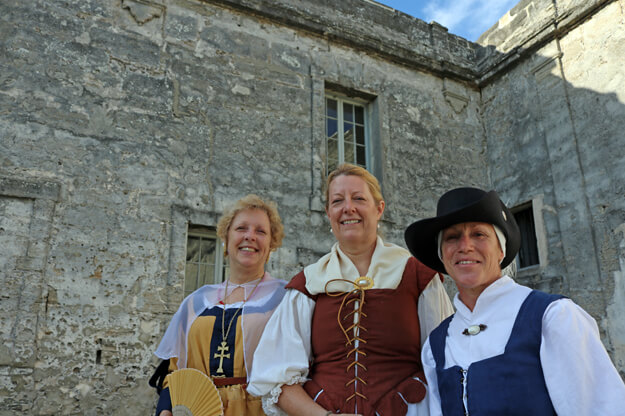
Often run by the national and the state park systems, some forts feature volunteer costumed characters wearing period clothing. They are also acting their century-old roles – people who often endured hot, humid, disease-ridden conditions.
Add to that cannons, artillery, and bastions – and most history buffs will have plenty to keep them intrigued.
Four Florida Forts
Take an authentic Florida tour as we visit four of our state’s historical forts that bring Florida’s history alive.
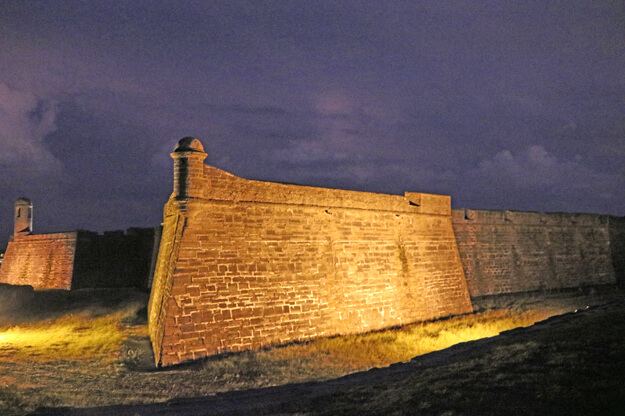
1. Castillo de San Marcos, St. Augustine
Only one American city can hold claim to the title of “oldest city”. St. Augustine wears its “nearly 450-year-old” title well drawing most travelers because of its rich and layered history.
No trip to St. Augustine is complete without a visit to one of our favorite Florida forts. That fort is the Castillo de San Marcos. It won’t take you long to understand why the Spanish built this immense fortress on Matanzas Bay. It includes a commanding view of the harbor.
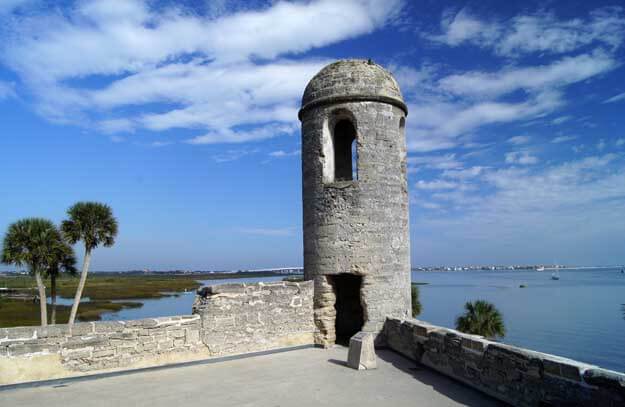
To protect Spain’s colonial trade and commerce, the Castillo de San Marcos was constructed. It took 20 years to build and was completed in 1695. It is considered the most well-preserved and oldest masonry fort from the Spanish colonial period anywhere in the United States.
It’s popular because of its notable heritage and the panoramic view of the Matanzas River, the city of St. Augustine, and the Bridge of Lions.
History of the Fort
The Florida fort is made of coquina rock. Coquina rock is created from thousands of years of shells and sand compressing into geological sediment.
Quarried locally, coquina provided the building blocks for creating St. Augustine’s defensive structures, homes, and buildings constructed during the period. The massive coquina walls of the fort actually absorbed enemy cannonballs rather than allowing them to destroy the fort.

Castillo de San Marcos is also known for its architecture, star-shaped with a hollow square within four diamond-like bastions. The configuration allowed for numerous firing positions for cannons while minimizing the possibility of a direct hit by enemy fire.
Entry to the Florida fort is across a moat, another defense feature. When visitors cross it to tour the fort there is a feeling of walking way back into history.
Castillo de San Marcos Address: 11 S Castillo Dr., St. Augustine, FL 32084
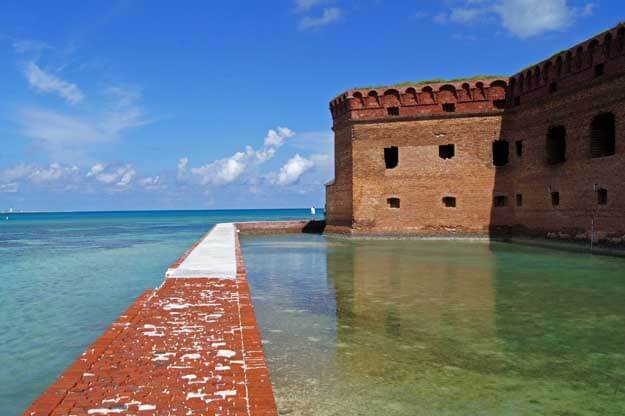
2. Fort Jefferson, Dry Tortugas
South of the Florida peninsula, seventy miles west of the Florida Keys, lay a cluster of small coral islands called the Dry Tortugas.
Surrounded by clear turquoise water and rimmed with crystalline sandy beaches, the islands were discovered by explorer Ponce de Leon in 1513. He found the area filled with sea turtles, thus calling it Las Tortugas (The Turtles).
The “dry” designation was added to warn newcomers that it was uninhabitable due to a lack of fresh water.
As the southernmost point along the maritime U.S. shipping lanes, the Dry Tortugas became a natural location for a military outpost. Fort Jefferson was built on Garden Key, an island with a deep-water anchorage that was part of the 100 square miles of the Dry Tortugas.
History of the Fort
The fort stood sentry over the Florida Straits protecting maritime interests in the Gulf of Mexico and along the eastern seaboard.
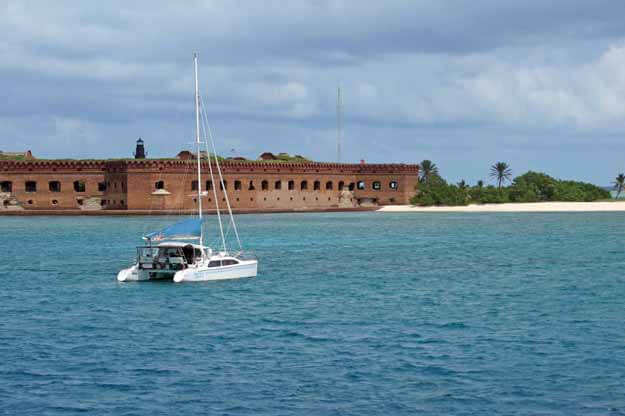
Fort Jefferson, named after President Thomas Jefferson, was constructed over a 30-year period beginning in 1846. The fort was never actually completed. Still, unfriendly ships passing between the Gulf of Mexico and the U.S. eastern seaboard were sent an imposing reminder to stay clear. The Florida fort was active until 1888.
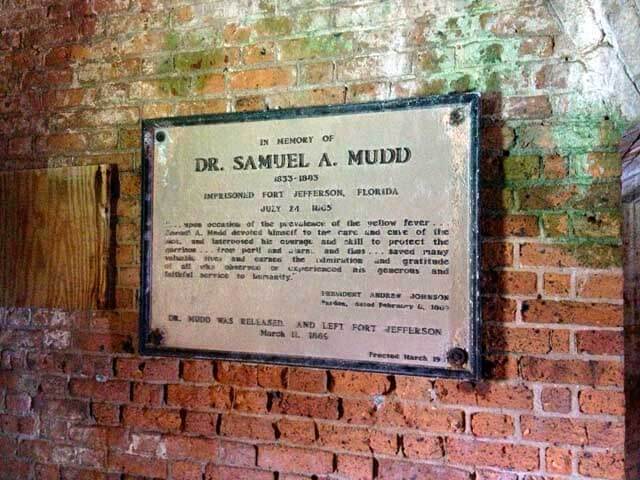
No battles were fought at Fort Jefferson, but it was used as a military prison. Most notable of the prisoners was Dr. Samuel Mudd, responsible for tending to John Wilkes Booth’s injury following the assassination of President Abraham Lincoln.
Although sentenced to life imprisonment, Mudd was pardoned by President Andrew Johnson and released.
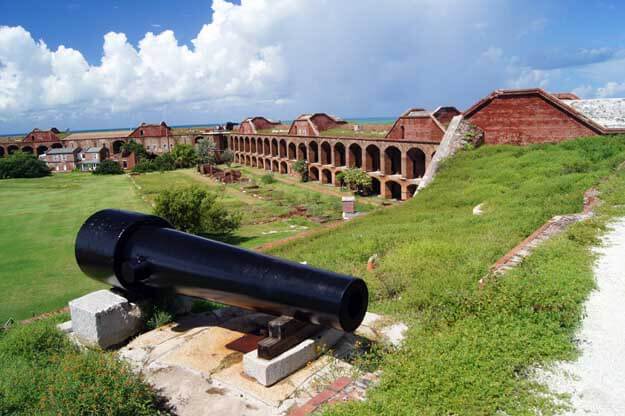
The massive design of the fort gave the U.S. an opportunity to house huge cannons and gun platforms on several levels for strategic placement. The walls meet at corner bastions, allowing the mounting of heavy machinery.
What can you see at the fort?
The inside walls provided space for open gunrooms, or casemates, with large openings called embrasures facing outward towards the sea. More than 16 million handmade bricks make up the hexagonal (6-sided) fort. Thick eight-foot-wide walls towering 45-feet high form one of the nation’s largest masonry forts ever built.
Surrounded by a moat, this intimidating Florida fort never actually saw active combat but was used as a military prison. It was home to thousands of soldiers as well as civilian workers who lived in remote settings.
Seeing their quarters and realizing that hot and humid weather was the norm, it is easy to see that these were rugged people, especially the soldiers who wore heavy wool uniforms while serving military duty. Diseases and hurricanes added to the challenge of daily living.
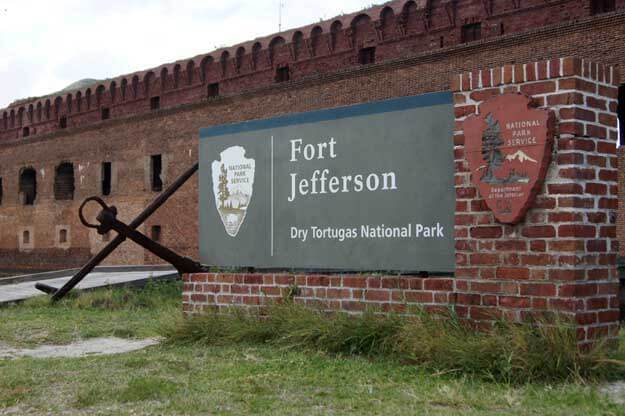
Walking through the fort, you’ll gain an appreciation for life over 150 years ago. Enjoy the spectacular 360-degree view while admiring the restored military machinery and the breathtaking turquoise-blue water.
There are a few ways to get to the Dry Tortugas. From Key West, the National Park Ferry, Yankee Freedom, a 110-foot catamaran, will take you on a full-day excursion.
Fort Jefferson Address: Key West, FL 33040
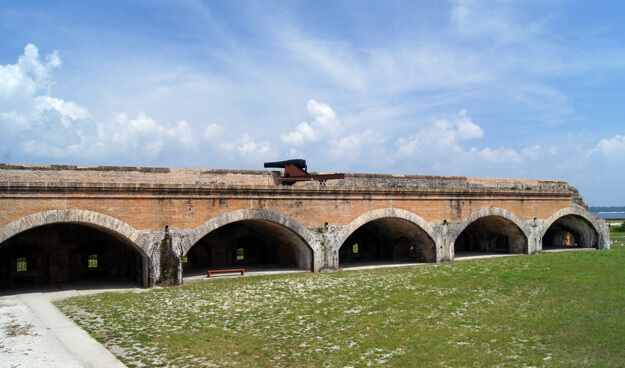
3. Fort Pickens, Pensacola Beach
Pensacola, the City of Five Flags, is located near Florida’s western border. Years of various occupations from Spain to Britain, then France, later to the Confederacy, and finally the United States, give the city more than 450 years of history and make it home to four historic forts of its own.
Fort Pickens, the largest of the four fortresses, was completed in 1834. Designed to defend Pensacola Bay and its navy yard, the fort lies at the entrance to the bay on the western tip of Santa Rosa Island, now part of the Gulf Islands National Seashore.
History of the Fort
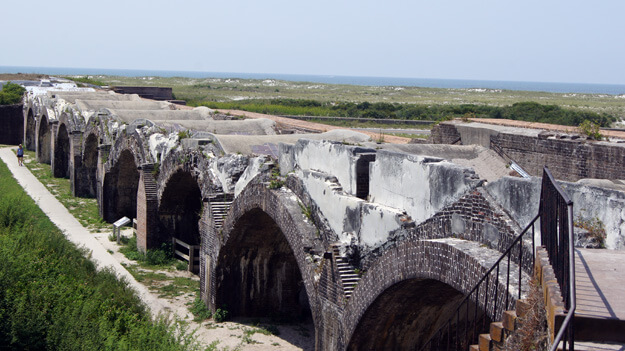
Following the Revolutionary War and the War of 1812, the United States decided to fortify all major harbors. Built by enslaved laborers who worked under oppressive heat while creating the huge structure, the fort is composed of nearly 22 million bricks.
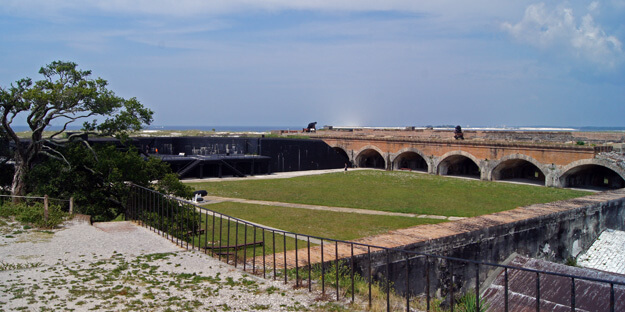
Named after American Revolutionary War hero Andrew Pickens, the fortress was completed in 1834 and defended Pensacola during the Spanish-American War, World War I, and II, before being decommissioned in 1947.
The only real military action occurred during the Civil War and is one of the few forts in the South not captured, remaining in Union control.
Another interesting event occurred in 1886 when Apache war leader Geronimo and other fellow Apaches were imprisoned for one year at Fort Pickens.

Park rangers provide free daily tours describing the fort and the advancements in military weaponry as canons gave way to updated artillery. That point is often driven home as fighter jets from the Naval Air Station maneuver above.
Beyond the pentagonal-shaped fort (although one side was demolished during a fire and subsequent powder magazine detonation) are vistas of powdery white sand and jewel-green waters.
If you enjoy camping, primitive or in comfort, there are facilities with updated cabins, nearby fishing, excellent beach access, and hiking trails.
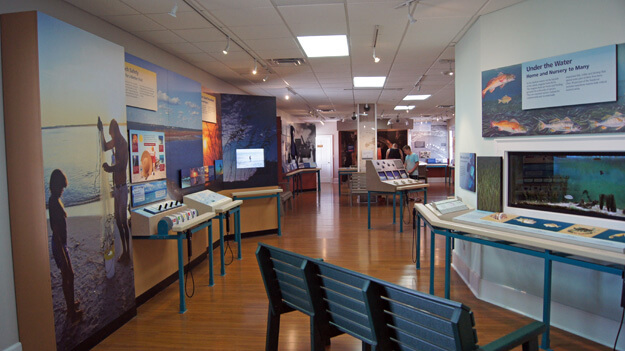
And if you need to escape the heat, check out the air-conditioned Fort museum and learn about the structure, the surrounding environment, and Pensacola’s history.
Fort Pickens Address: 1400 Fort Pickens Rd., Pensacola Beach, FL 32561
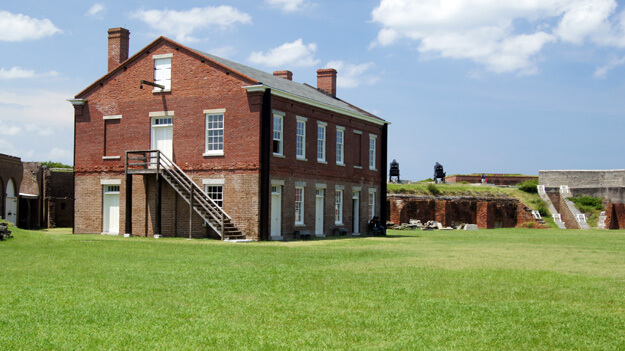
4. Fort Clinch, Fernandina Beach, Amelia Island
Less than an hour north of Jacksonville in Florida’s northeastern corner, within the Amelia Island resort community is Fort Clinch. Built in 1847, at the mouth of the St. Mary’s River, the fort protected coastal and interior shipping along the river and in the deep water Fernandina seaport.
Although no battles were fought at the fort, it was a military outpost during both the Civil War and Spanish American War. It became obsolete, later abandoned, and then fell into disrepair but was thankfully restored in the 1930s by the Civilian Conservation Corps.
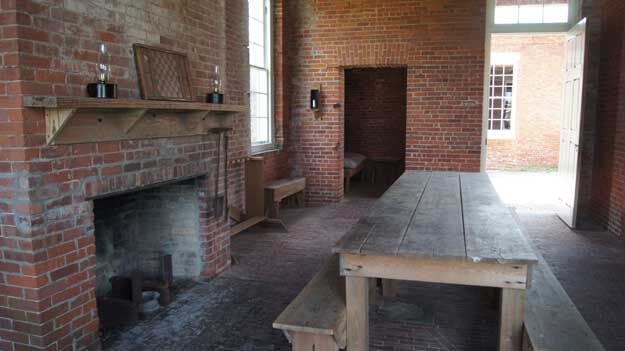
You’ll enjoy the spectacular view of both the St. Mary’s River and Cumberland Sound while climbing over the massive “pentagon-shaped” fort, centered by a large courtyard with huge cannons above.
Over five million bricks were used to construct the large military structure fortified with corner bastions and embrasures.
Once you’ve walked through the drawbridge entrance, you’ll explore the period-appointed bunkrooms, officer quarters, garrison, store, bakery, kitchen, laundry, blacksmith shop, and prison.
The experience of living and working in the fort is brought to life by viewing rooms equipped with uniforms, boots and cartridges, stacked cannonballs, wooden laundry tubs, and even an officer’s table set with fine china.
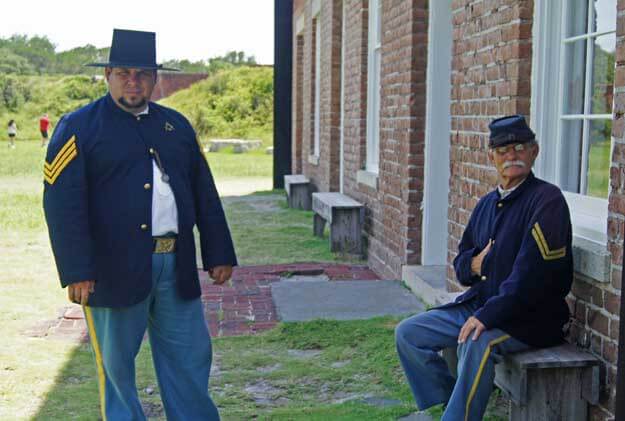
Volunteers dressed in costumes provide plenty of information making the tour fun as well as educational. If you’re there during the first weekend of each month, volunteers dressed in period costumes provide an extended reenactment, performing their roles and assuming their individual “character” and “position” of that time period.
Fort Clinch Address: 2601 Atlantic Ave., Fernandina Beach, FL 32034

Stepping back into Florida forts history helps us not only discover our beautiful surroundings but also gives us an opportunity to appreciate those who came before us.
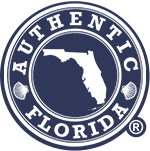
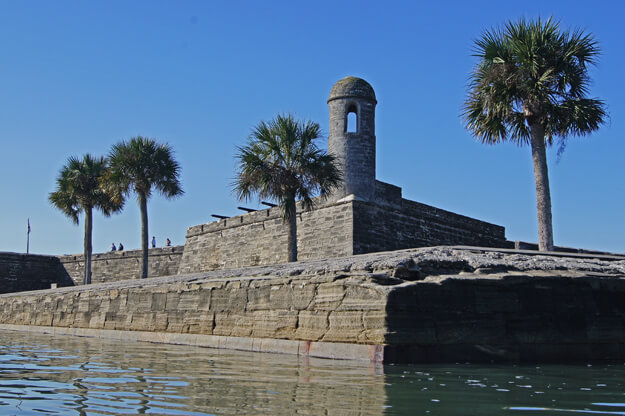
Definitely adding it to my bucket list, hope I can visit soon